Continue reading for our analysis...
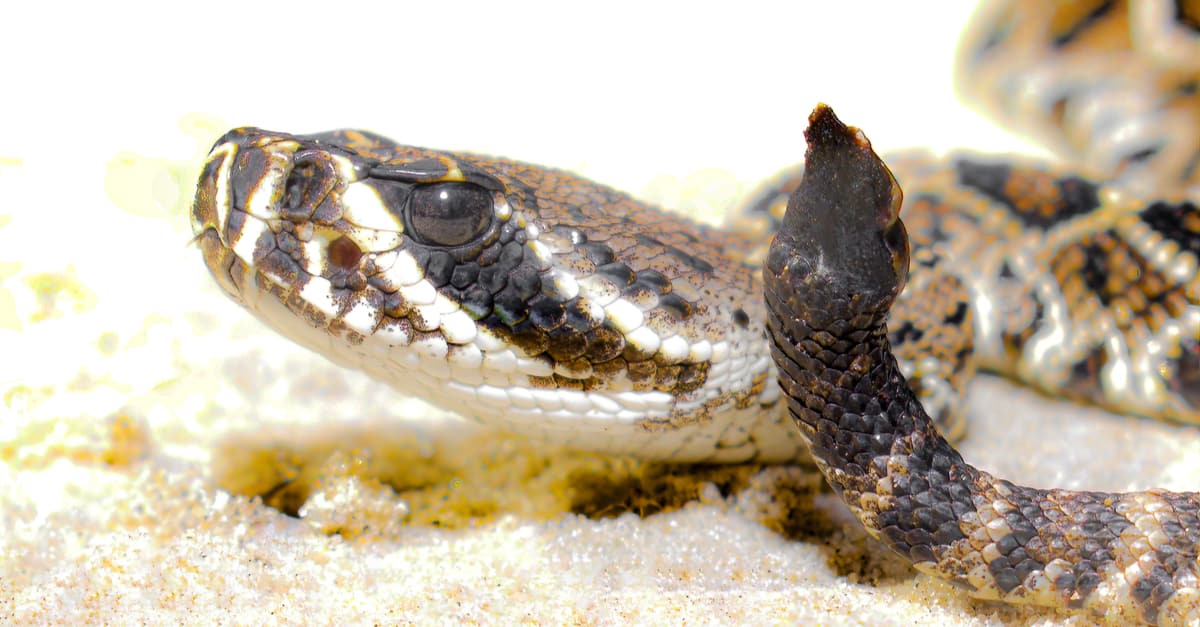
The eastern diamondback rattlesnake, which may reach lengths of up to nearly 8 feet and averages 3 to 6 feet, is the longest and heaviest venomous snake in North America. It is renowned for its recognizable rattle and its highly venomous bite on people.
Hemotoxin, a toxin found in their venom, damages tissue and destroys red blood cells. However, because antivenom is readily accessible across the rattlesnake’s habitat, unnecessary deaths from rattlesnake bites are uncommon.
A Diamondback Takes to the Highway
Recently, one of these large snakes was attempting to cross a dirt road in Florida, and the witness videoed the event. The cameraman states that once the snake realized he wasn’t a threat, it felt safer to cross the road.
You can see in the footage just how huge this snake is. Its thick body stretches out as it makes its way across the rocky surface. This snake’s back is covered with a series of large, black diamonds with brown inside and cream edges. The body’s base has a rusty tint. The tail culminates in a rattle, which is frequently kept in the air. A light-bordered, dark stripe runs diagonally between each eye and separates the broad, robust head from the neck.
Before getting too far across the street, this slithery serpent turns around and heads back towards the brushy ditch. Eventually, he attempts once again to make it to the other side of the dirt road. This time, with a lot more confidence and agility.
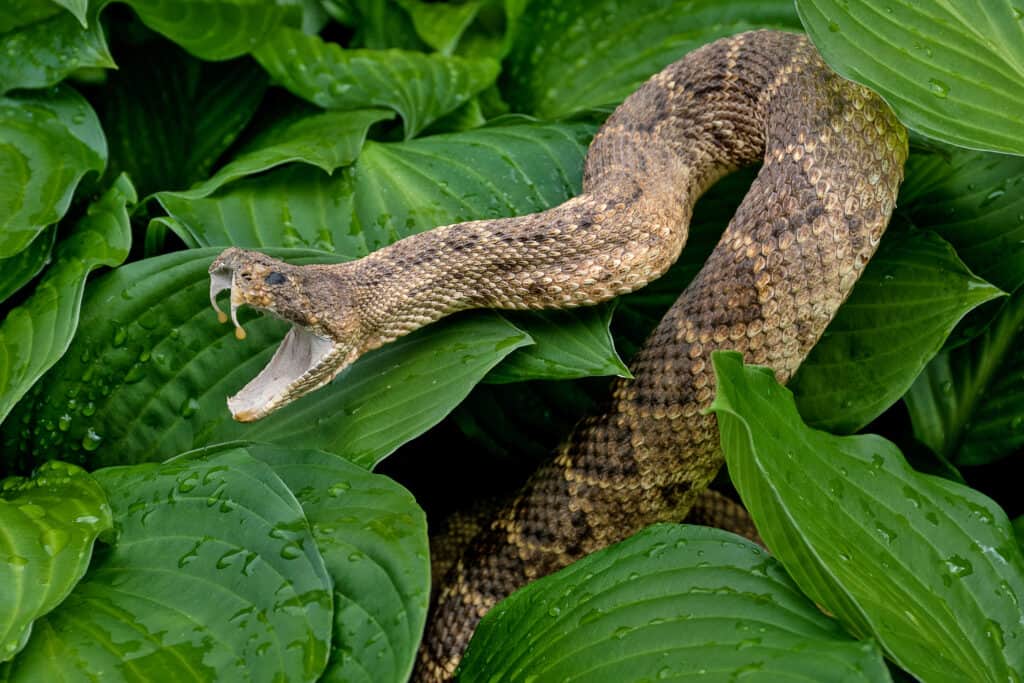
The Eastern Diamondback Rattlesnake can reach 8 feet in length.
©Maria Dryfhout/Shutterstock.com
Seeing its entire body stretched out as it moves is truly a sight to behold. The person filming mentions he’s using a telephoto lens, allowing him to keep a safe distance while still capturing incredible footage.
Snakes cross dirt roads for many reasons. For one, they enjoy the feeling of the warm surface on their belly as they scurry on top of the rocks and sand. They also may be moving to a more sunny area as the day goes on.
Where Do Eastern Diamondback Rattlesnakes Live?
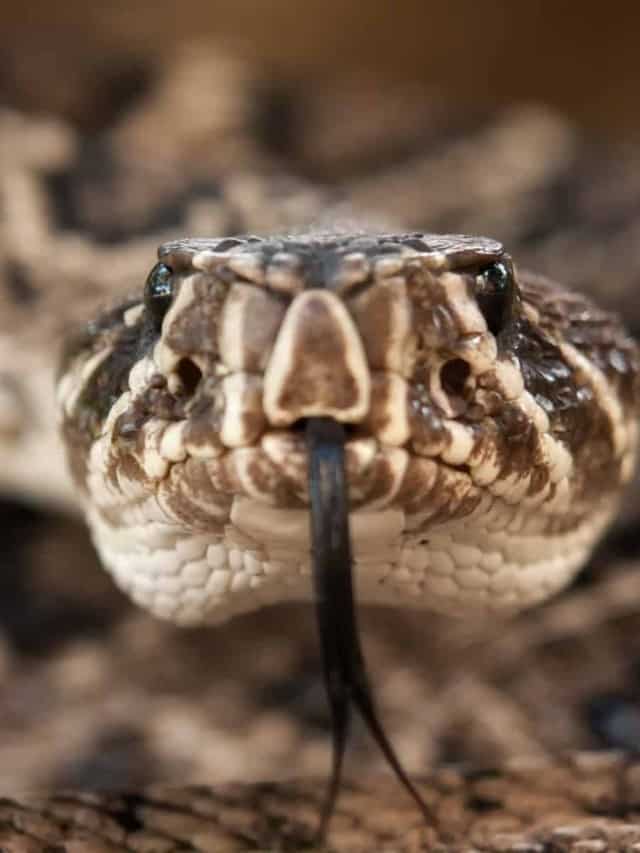
Their primary habitat consists of longleaf pine savannas, although they can also be found in pine flatwoods, wiregrass patches, and turkey oak environments.
©iStock.com/Wide-River-Rick
Longleaf pine savannas serve as their main habitat, although they also frequent pine flatwoods, wiregrass patches, and turkey oak environments. They may be found on the majority of Florida’s barrier islands and can swim.
While sandhill communities are the eastern diamondback rattlesnake’s typical habitat, it will also frequent swampy and marshy areas. You’ll find these gorgeous serpents in gopher tortoise burrows and stump holes, where it is susceptible to “gassing” by snake hunters in the wintertime.
Take a look at just how large this snake is in the video below. The commentary is educational and gives us an inside look at how locals in Florida interact with these wild animals.
Is It Normal for Rattlesnakes to Hang Out on Roads?
Rattlesnakes are generally shy, reclusive creatures that will avoid humans if possible. However, as humans encroach on their habitat they are forced into navigating the roads and buildings we place in their way. Rattlesnakes move across roads when moving to new hunting grounds, seeking out mates, or searching for a new home. In cooler weather, they will also sun themselves on roads in order to warm up. If you see a snake in the road, you should give it a wide berth and let it continue on its way.
How Long Do Eastern Diamondback Rattlesnakes Live?
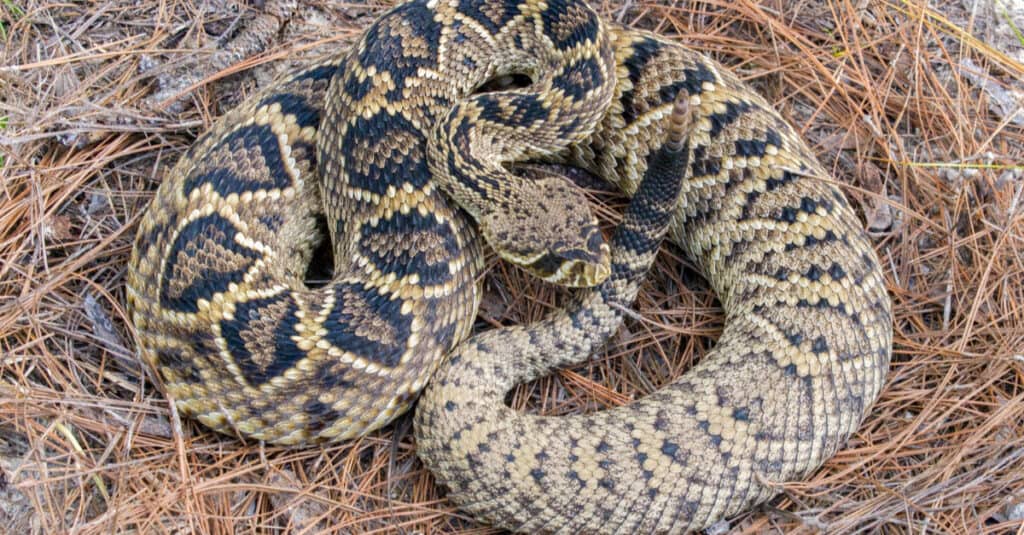
Eastern Diamondback Rattlesnakes typically live for a span of 15 to 20 years, constituting their average lifespan.
©Chase D’animulls/Shutterstock.com
The typical lifespan of an eastern diamondback rattlesnake is 15 to 20 years. Some are shorter for various reasons, including the exploitation of the rattlesnake for its skin. On the other hand, in captivity, a rattlesnake can live up to 30 years!
In terms of size, the majority of fully grown Eastern Diamond-backed Rattlesnakes measure approximately 33-72 inches (84-183 cm) in total length. However, a remarkable record length of 99 inches (251.5 cm) has been documented for this species.
Want to tell how old a rattlesnake is? Some say to check the number of segments on its rattle, while others say this method isn’t true for aging a rattlesnake.
What Do Eastern Diamondback Rattlesnakes Eat?
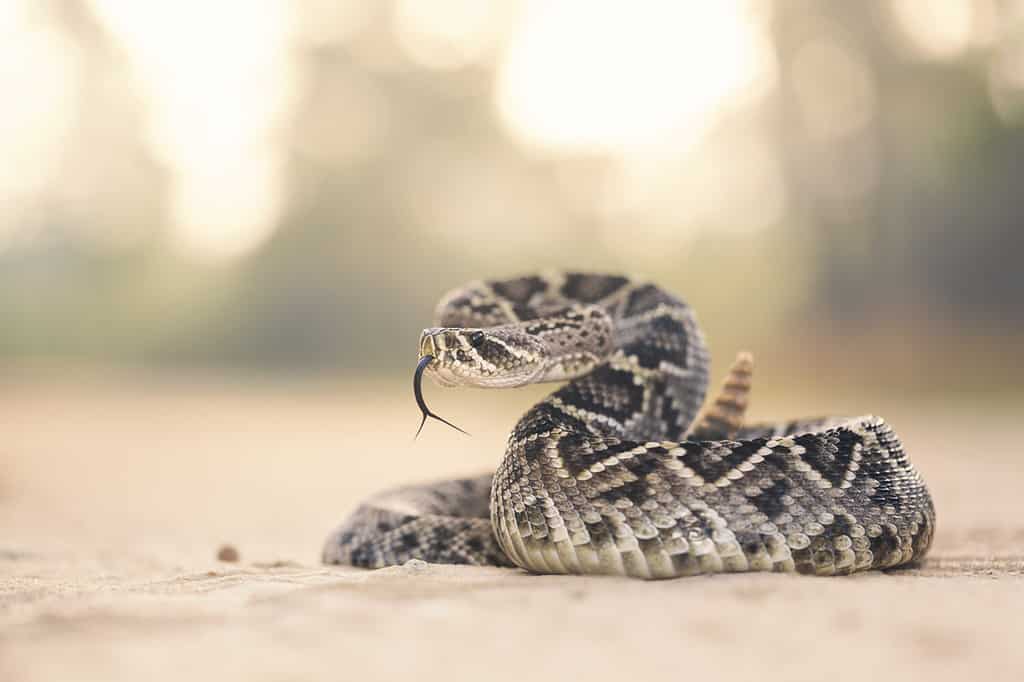
There are approximately 56 rattlesnake species and over a dozen subspecies.
©Kristian Bell/Shutterstock.com
The typical diet of a carnivorous eastern diamondback rattlesnake consists of birds and small mammals. Mammals it preys on include rats, mice, squirrels, and rabbits. It will eat birds like young wild turkeys, quail, and towhees. These snakes will even prey on lizards and large insects.
Eastern Diamondback Rattlesnake vs. King Cobra
A bite from any snake is a big deal. Whereas most are “dry bites” aka no venom, there is no way to 100% know without seeking medical attention.
As far as deadly, king cobras are more venomous than rattlesnakes. Their venom is both more potent and comes in higher quantities. However, king cobra bites are rare compared to eastern diamondback rattlesnake bites. This means while the king cobra is more deadly, the rattlesnake presents more of a threat to humans.
Discover the "Monster" Snake 5X Bigger than an Anaconda
Every day A-Z Animals sends out some of the most incredible facts in the world from our free newsletter. Want to discover the 10 most beautiful snakes in the world, a "snake island" where you're never more than 3 feet from danger, or a "monster" snake 5X larger than an anaconda? Then sign up right now and you'll start receiving our daily newsletter absolutely free.
Thank you for reading! Have some feedback for us? Contact the AZ Animals editorial team.







